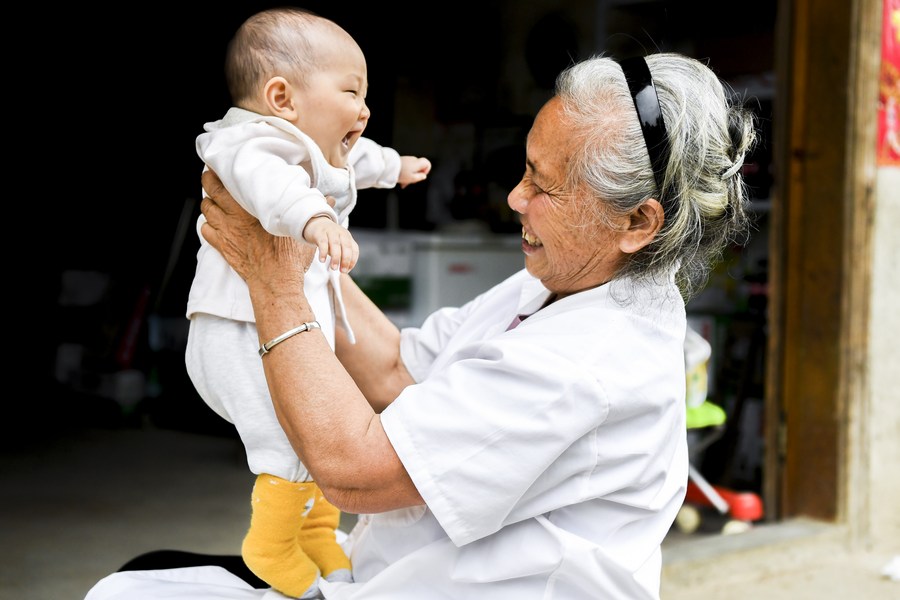Measures to increase births expected to be introduced

An old lady plays with a baby in Zhumei Village, Hezhou City of south China's Guangxi Zhuang Autonomous Region, May 11, 2021. (Xinhua/Cao Yiming)
Boosting fertility remains central to nation's population policy in the future
More comprehensive and concrete measures aimed at encouraging births will be rolled out in China to meet public expectations and increase fertility rates, experts said.
They made the comments after a key report delivered to the 20th National Congress of the Communist Party of China, which concluded on Saturday, stressed that the country will establish a policy system to boost birthrates and bring down the costs of pregnancy and childbirth, child rearing and schooling.
China's fertility rate dropped below the replacement level of 2.1 — the minimum threshold for keeping a stable population — in 1992 and has remained at a low level since. Official data show that in 2020 the rate fell to 1.3.
To tackle falling birthrates and a looming decline in population, the central leadership released a decision in May last year to allow all couples to have three children, up from two, and to roll out supportive policies, such as extending maternity leave and issuing fertility subsidies.
"The policy shift has not yielded expected outcomes thus far. So the report signals that boosting fertility remains the core of China's population work in the future, and systematic measures surrounding fertility should be established," said Lu Jiehua, a sociology professor at Peking University and vice-president of the China Population Association.
He said one of the most important tasks is to consolidate sporadic measures seen in localities and elevate them to a national level.
"Since the decision was announced, we have seen some regional policies shoot into the limelight — such as Panzhihua city in Sichuan province, which first decided to give monthly allowances for families with more than one child. However, top-level design of such policies should be enhanced."
Lu added favorable policies, such as longer maternity or paternity leave and subsidies, should not only target families pondering whether to have a third child, but also those planning to have their first.
Lu said the more challenging task would be to change the increasingly popular belief among the young that having a child is not worthwhile and they had better invest in more insurance programs to prepare for old age.
"Overall, it is important to create a truly fertility-friendly society covering all aspects from maternity leave, financial support and cultural influence," he said.
Yuan Xin, a demography professor at the Population and Development Research Institute of Nankai University's School of Economics in Tianjin, said that despite the prompt response of local and central governments in releasing supportive policies, raising fertility rates will be a naturally slow process.
He suggested local officials step up enforcement of these policies and continue to research the needs and opinions of families, and tailor policies toward their demands.
The report also calls for pursuing a proactive national strategy in response to population aging, developing elderly care programs and services, and providing better services for elderly people who live alone.
China had about 267 million elderly people by the end of last year, accounting for 18.9 percent of the population. The rate is projected to reach 20 percent by 2025 and 30 percent by 2035.
With a deepening aging trend, Lu said, the number of special elderly groups, such as those who live alone, whose only child has died or who struggle financially is certain to increase.
"As we strive for common prosperity, seniors could be left behind and we should ramp up care for them," he said.